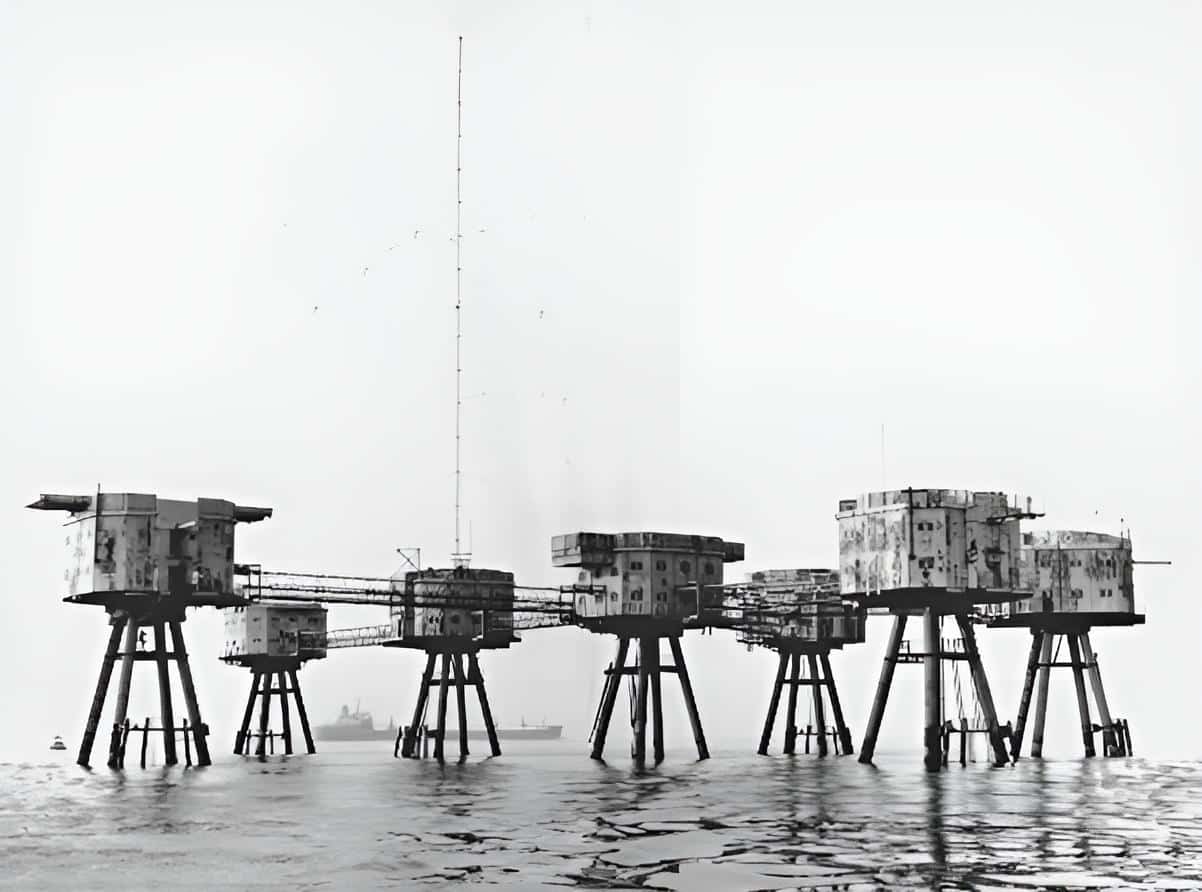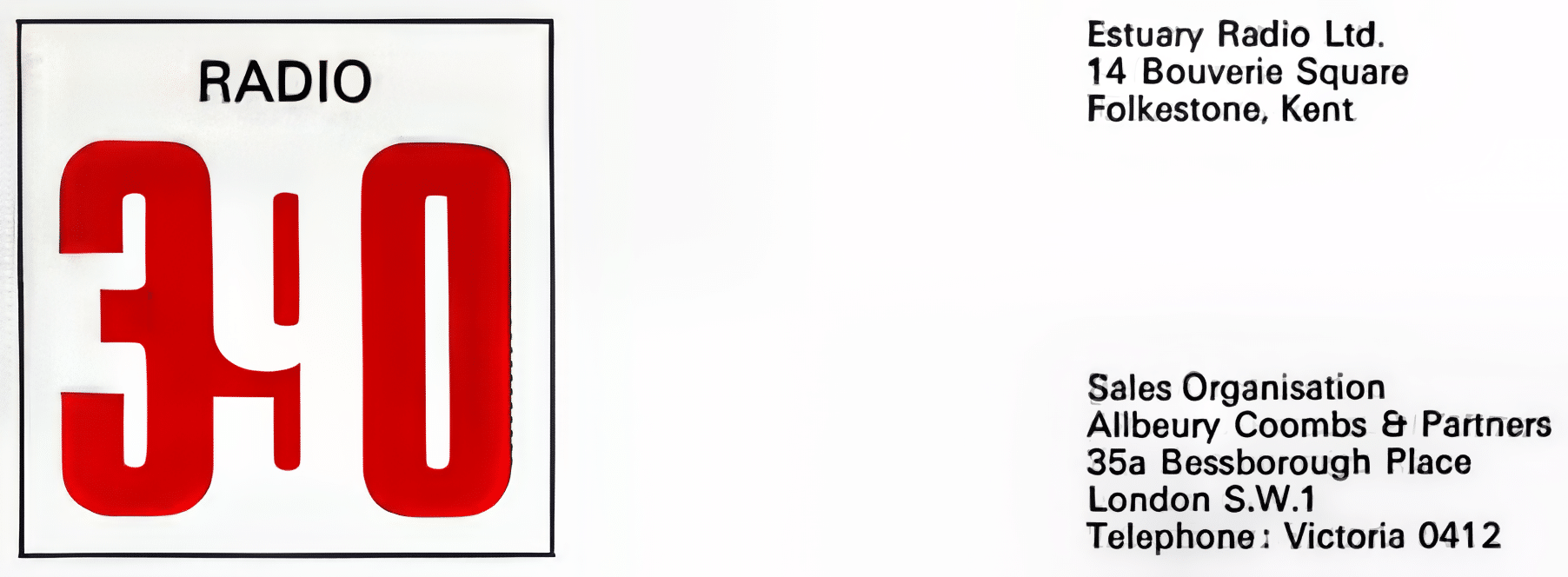Details: The offshore forts, or towers, were originally World War II military facilities built to protect the coastal sea lanes and were essentially of two designs. Red Sands, Shivering Sands and Great Nore were Army constructed, originally consisting of seven separate towers, each set on four concrete legs supporting a steel structure 100ft above sea level and connected by narrow catwalks. This complex consisted of five gun towers, a searchlight tower and a main control tower. The towers were towed out on specially constructed barges, two at a time, and set into the sea bed.
The seven towers of Red Sands were placed approximately six miles off Minster, Isle of Sheppey, over the period July 23rd to September 3rd 1943.
The forts were designed to house various gun installations ( quite visible on many pictures ) to combat the twin threats of enemy aircraft and E-boats. The original armament consisted of two 4.5″ guns mounted on the main decks, four Lewis machine guns and two Bofors 40mm guns on the upper deck with the central tower supporting a radar scanner dish.
The forts were not a popular posting and were abandoned wholesale by the military at the end of the war after which ownership became a matter of opinion as they were generally considered to be situated in international waters and not subject to any particular mainland jurisdiction. In fact, the War Office seemed to be rather keen to pass responsibility for them onto other government departments having tried, unsuccessfully, to sell them off in 1963. This didn’t really matter, of course, as they were doing no harm and were of no real practical use to anyone – until pirate radio came along. A third type of offshore fort was also in existence, notably Horse Sand Fort in the Solent, but did not figure significantly in pirate radio activities.
By an extremely questionable interpretation of an obscure passage in the Geneva International Convention of the Sea, 1958, which was ratified in September 1964 by the British government in an Order in Council:
‘The ( Thames ) estuary may be considered as a bay if the area of water within the bay exceeds that in a semi-circle drawn, with a 24 mile baseline, across the indentation in the coast’ and another debatable decision which considered sandbanks visible only during unusually low tides at certain parts of the year to be part of the British mainland, all of the towers, except Roughs and Sunk Head, were declared to be inside territorial waters and therefore subject to prosecution under the Wireless and Telegraphy Act. The area of water in the bay, 683 square miles as calculated by a Ministry of Defence naval surveyor, was only 5 square miles more than that inside the theoretical semi-circle!
The last military maintenance teams were withdrawn from the towers in the winter of 1958/59 and by the Sixties all the offshore towers were already in a state of considerable neglect and disrepair, offering at best only a bare minimum of facilities and were to prove impossible to supply for long periods during bad weather. This is part of a description of Shivering Sands, which was the home of Radio City. The fort had lost one of its towers when a ship ran into it, killing four people: “. . . one section had collapsed and another was standing all alone where the walkways had collapsed.”
Tragedy occurred at Red Sands fort on December 16th when Radio Invicta co-owner Tom Pepper, engineer Martin Shaw and disc jockey Simon Ashley were drowned in very bad circumstances following the capsizing of their launch after having delivered supplies to the station from Faversham.
Also, being in open sea areas and constructed largely of metal, they were natural lightning conductors. On Red Sands, D.J. Paul Beresford of Radio 390 was actually struck by lightning, not only surviving but managing to broadcast his usual programme only hours later! Even on good days huge build-ups of static electricity were apparently a problem and there are many recounted tales of station staff being thrown some distance after carelessly grabbing metal door handles. Minor things like that, however, didn’t seem to be any deterrent to the more determined pirate radio station operators. [Souce]
Offshore radio stations: Radio Invicta 17th July 1964 till 11th February 1965, KING Radio 25th February 1965 till 22nd September 1965, Radio 390 25th September 1965 till 28th July 1967
Location: Thames Estuary (51.28.62 North, 0.59.60 East)


